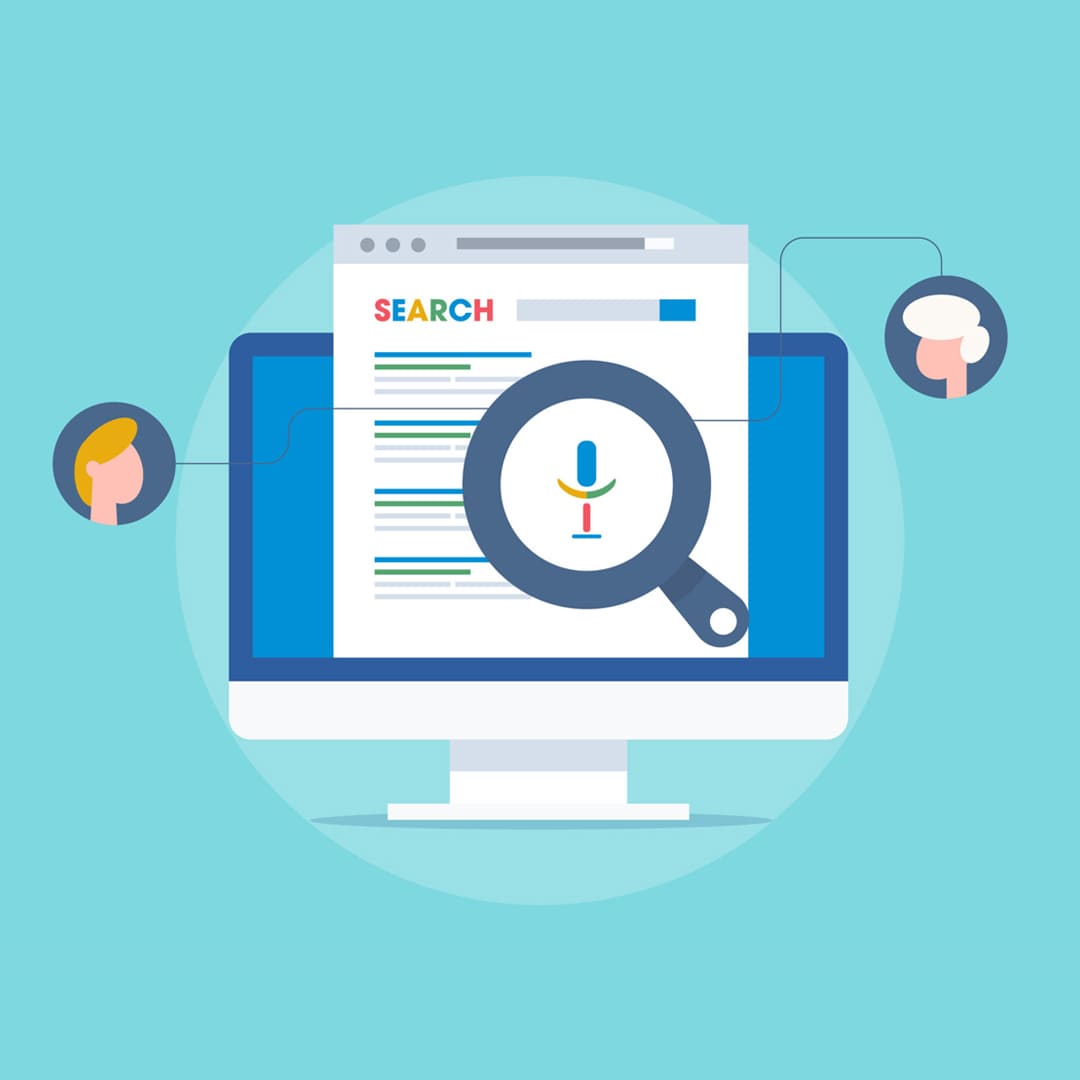Navigating success through effective stakeholder communication and involvement

Any company or project's success depends extensively on involvement from stakeholders and communication, and this serves as the basis of establishing deep connections and encouraging collaboration. It is impossible to adequately emphasize the importance of involving stakeholders in a contemporary dynamic and interconnected business environment. These people or groups that are passionate about the decisions taken and the results of the specific firm. They may be members of the community, workers for the business in question, stockholders, or consumers. Effective interpersonal interaction makes sure that all parties are heard, helps to get assistance, sets appropriate standards, and prevents potentially dangerous circumstances. Involvement in the process of making choices with stakeholders promotes a sense of commitment and ownership that establishes trust and fosters a more enduring and mutually advantageous relationship. Understanding the significance of transparent and welcoming stakeholder communication becomes essential as organizations traverse complex environments in order to achieve long-term success and generate an advantageous impact on both internal and external stakeholders.
Clarity in change: Navigating rebranding with transparency
Rebranding is an enormous undertaking that can have an effect on a lot of numerous individuals, such consumers, employees, investors, and the community as a whole. In order to control expectations, foster trust, and guarantee an uninterrupted change, transparent interaction must be maintained during the rebranding process. The following are some ways to go about openly communicating rebranding intentions:
- Give Specific Justifications for Rebranding: Continue by outlining the rebrand's objectives in depth. Whether the primary objective is to update the brand, expand into new markets, or connect with the organization's new purpose, presenting stakeholders a clear synopsis facilitates understanding of the goals.
- Create a Thorough Communication Plan: Develop a comprehensive strategy for communication that specifies the propagation of information about the rebranding at the right moments in time. Add important dates, which involves the launch date, declaration date, and any intermediary updates.
- Engage Important Parties Early: Engage important stakeholders as early in the rebranding procedure as possible, including employees, clients, and shareholders. In order to make kids feel included in the shift in circumstance, ask for their input and suggestions. This involvement helps address concerns and builds a sense of ownership.
- Provide Consistent messaging: Create a message that is both addressing possible concerns and emphasizing the benefits of the rebrand. Make sure that the messaging accurately communicates the goals and core values of the business.
- Select the Effective Communication Channels: To reach different stakeholder groups, select the channels that will most effectively serve your needs. Press releases, emails, social media posts, town hall meetings, and other venues might all be used in combination for this. Make use of the platforms where your stakeholders are most likely to interact.
- Provide Ample Notice: Give stakeholders ample notice before the official announcement of the rebrand. This allows them time to process the information and reduces the likelihood of surprises. Particularly, workers should be notified well in advance.
- Address any inquiries and Concerns: Be ahead of the game in your communications by anticipating any inquiries and concerns from stakeholders. This could include how the rebranding will affect products, services, or job roles.
- Emphasize Benefits: Outline the advantages and successful results of the rebranding. Highlighting the benefits contributes to the creation of a positive story, whether it be greater market share, better customer experiences, or stronger product offers.
- Organize a Question and Answer Session: Give interested parties a chance to clarify and ask questions. Organizing a Q&A session, in-person or online, facilitates direct communication and helps clear up any lingering doubts.
- Update Branding Materials Gradually: Implement the rebranding gradually, updating branding materials over time. This can help ease the transition for stakeholders and avoid confusion. Clearly communicate the timeline for these changes.
- Celebrate the Transition: Following the rebranding process, acknowledge and honor the change. Present the new brand components, showcase success stories, and express gratitude to important stakeholders for their continuous support.
- Gather and Respond to Input: Invite interested parties to offer input on the rebranding. When feasible, respond positively to criticism to show that you are receptive and dedicated to ongoing development.
In order to preserve stakeholder support and preserve confidence during the rebranding process, transparent communication is imperative.
Empowering the team: Employee and customer input in action
Making educated judgments, encouraging a sense of ownership, and making sure that improvements meet their requirements and expectations all depend on getting feedback from both staff and consumers. The following are a few successful methods for getting feedback from both staff and customers:
Gathering Input from Employees
- Create surveys and questionnaires to get input on specific issues related to the business, the work environment, or recommended changes. Ensure that the questions are brief, relatable, and pertinent.
- Focus Groups: Hold focus groups so that coworkers in smaller groups can freely exchange ideas and opinions. In-depth insights can be obtained and engagement is encouraged using this approach.
- Interviews one-on-one: To get more individualized and thorough input, do one-on-one interviews with staff members. This approach is particularly useful for understanding unique perspectives and concerns.
- Town Hall Meetings: Organize town hall meetings or open forums where leadership can address employees directly and invite their input. This offers a medium for instantaneous engagement and correspondence.
- Workshops for Employees: Arrange brainstorming or workshop sessions to encourage staff members to offer ideas and thoughts. This cooperative strategy promotes involvement and teamwork.
- Online Platforms: Make use of online platforms, such as channels for employee feedback or internal communication tools, where staff members can provide anonymous feedback if they so want. This can help in collecting honest feedback.
- Suggestion Boxes: Put in-person or virtual suggestion boxes in popular areas so that staff members can anonymously share ideas or grievances. This is a good approach to get opinions from those who might be reluctant to express themselves honestly.
- Pilot Programs: Implement small-scale pilot programs for proposed changes and gather feedback from the employees involved. This allows for testing ideas before full implementation.
Gathering Input from Customers
- By developing surveys for customers, feedback on products, services, or overall satisfaction can be gathered. Keep the surveys brief and, if at all feasible, offer incentives to promote participation.
- Incorporate feedback forms into your store, website, and interfaces linking your goods and services. Give customers a simple means of voicing their thoughts regarding their experiences.
- Social Media Listening: Monitoring social media platforms to look for client mentions, remarks, and recommendations. Engage in intimate conversations with customers while considering their input into account during the decision-making process.
- Customer conversations: In order to discover more about an assortment of consumers' wants, preferences, and challenge spots, do individual talks with them. This methodical approach to qualitative inquiry is capable of producing copious amounts of comprehensive knowledge.
- Online Reviews: Keep a look out for reviews published on review sites associated with your industry or on sites like Yelp and Google. Analyze patterns and identify opportunities for improvements by considering feedback provided by clients.
- Customer Advisory Boards: Construct an advisory board for your consumers, formed up of passionate customers who can offer continuous input and assessments. For upcoming endeavors, this group can be an important listening board.
- Invite a selected number of consumers to volunteer to take part in beta testing of forthcoming characteristics or products. Their firsthand experience and feedback can be instrumental in refining the offering before a wider release.
- Customer Workshops or Focus Groups: Organize workshops or focus groups with customers to discuss specific topics or gather input on future plans. This could encourage a feeling of connection and devotion
Empowering our workforce: Staff preparation for the rebrand
In order to ensure a smooth transition and equilibrium with the new identity of the company, educating and preparing employees for a rebrand is essential. This is a comprehensive manual that will help you educate and get those who work for you ready for a rebrand:
- Explain the Why and How: Thoroughly explain the reasoning behind the rebrand and explain the practical objectives it seeks to accomplish. Demonstrate how the organization's mission and core principles are in accordance with the rebrand. Provide a little explanation so that the employees can see why it's essential.
- Start a Comprehensive Plan of Communication: Develop a comprehensive communication strategy that details the primary points and the rebrand's timetable. Instruct staff members on the different phases of the rebranding process, from inception to conclusion.
- Plan Orientation workshops: Conduct orientation workshops to acquaint the employees with the improved logos, taglines, and design elements that constitute the new brand identity. Explain about the explanation for every alteration and how it fits into the brand's general strategy.
- Give Brand rules Training: Provide comprehensive guidance on the new brand regulations, encompassing topics like typography, color palettes, logo usage, and other elements of design. Ensure that your team members are aware of the relevant regulations and exhibit the abilities to adhere to them on a regular basis.
- Role-Specific Training: Develop curricula for training according to particular roles within the organization. For example, customer support employees would require guidance on how to respond to inquiries about the branding, while marketing personnel might require instructional materials on how to effectively communicate the modifications to customers.
- Conduct practical training so that your employees may experience applying the new brand guidelines. This could include designing mock materials, creating presentations, or using the updated branding in various contexts relevant to their roles.
- Digital Training Platforms: Utilize digital training platforms to provide flexible learning opportunities. A geographically dispersed or distant workforce can be effectively addressed with the implementation of online modules, conferences, and online training programs.
- Feedback System: Provide an environment for staff members to communicate what they have to say about previous training they received in the past. This enables you to swiftly deal with any misunderstandings or issues and make any needed modifications to the training curriculum.
- Leadership Support: Make sure that the branding has the transparent and active backing of the leadership. In order to emphasize the significance of the rebranding campaign throughout the entire organization, executives should provide an illustration of the most recently developed corporate principles and behaviors.
- Promote Employee Involvement: To give employees a feeling of ownership, incorporate staff members in the rebranding process. Make employees feel important and engaged in the success of the branding through permitting them to contribute their opinions, ideas, and suggestions.
- Develop Brand Ambassadors: Identify and develop brand ambassadors throughout the company. The individuals in question can act as ambassadors for the new brand, assisting in promoting the sharing of knowledge, answering to inquiries, and influencing their peers to implement the transition to it.
- Create Scenarios: Make use of scenario-based training to create the sort of real-world scenarios that employees would experience after the rebrand. This helps them practice applying the new brand guidelines in practical situations.
- Measure and Assess: To gauge the success of the training, put assessment instruments into use. Questionnaires, quizzes, or practical assessments may be used to gauge how well staff members are using the new brand and testing their application expertise.
- Provide Ongoing Assistance: As staff members become used to the new brand, give them continual assistance and resources. A dedicated support desk, frequently asked questions, or routine check-ins to address any unanswered queries or worries could be examples of this.
- Celebrate the Launch: Host internal parties, give out prizes, or otherwise mark the official start of the rebrand. Express gratitude to staff members for their efforts in appreciating the change and contributing to the rebranding success.
Collaborative decision-making: The power of involving key stakeholders in the process
Regarding decisions to accurately represent the needs, expectations, and interests of the people who may be impacted, significant stakeholder groups must be involved in the decision-making process. The following are some methods for including important parties in decision-making:
- Identify Crucial Players: The initial phase of the procedure involves identifying and categorizing Crucial Players based on their importance, influence, and degree of involvement in the matter being discussed. Ensuring the right persons or groups participate in the decision-making process is ensured by this.
- Establish a strategy for incorporating interested parties in the procedure for making decisions. This needs to be a thorough plan describing how stakeholders will be encompassed at every phase of the process to be undertaken. In order to promote effective collaboration, establish explicit roles, responsibilities, and methods of communication.
- Early Involvement: Include those who are interested from the very beginning of the procedure for making decisions. This increases their likelihood that they will be in favor and buy in because it allows their input to have an impact on the decision from the very beginning.
- Set Clearly Stated Goals: Clearly define the goals of the procedure for making decisions. Clearly articulate the opportunity or difficulties and the end result of the preference. This provides a framework for stakeholders to contribute meaningfully.
- Give Stakeholders Enough Information: Provide stakeholders the knowledge that they require to make adequately informed contributions. Provide appropriate details, analysis, and background knowledge to make sure that everybody involved are fully informed of the decision being taken.
- Encourage Open Dialogue: Establish an environment that welcomes honest and straightforward conversation. Encourage a culture in which individuals with interests are at ease sharing their opinions, worries, and suggestions. Give thoughtful consideration to their perspectives.
- Use a Variety of interaction approaches: For accommodating an assortment of restrictions and preferences, use an assortment of communication approaches. Gatherings, workshops, questionnaires, surveys, focus groups, as well as virtual instruments for collaboration may all be included under this category. Make certain that the strategies implemented fit the needs along with the accessibility of the stakeholders.
- Diversity & Inclusivity: Whenever decisions are being made, it's essential that all individuals from every part of the organization, structure of the company, and demographic backgrounds are given due consideration. This enables a range of perspectives to improve the manner in which decisions are made.
- Establish feedback loops that provide stakeholders frequent information on how their opinions are impacting the decision. This shows transparency and emphasizes how important the efforts they make are.
- Iterative Decision-Making: Think about employing an iterative strategy when making decisions, especially when they are complex or involve multiple considerations. This entails working with stakeholders and making adjustments to decisions in light of continuous input.
- Make Decision-Making Roles Clear: Clearly state the roles and duties involved in making decisions. Share information about whether decision-making is being done collaboratively, with input from stakeholders, or if certain people or groups have the last say.
- Conflict Resolution Mechanism: Recognize potential conflicts before they develop and resolve them during the decision-making process. Provide a fair and impartial dispute resolution process and make sure it is followed.
- Training and Capacity Building: Provide training and capacity building for stakeholders, especially if the decision involves complex subject matter. They are then better prepared to contribute with confidence and professionalism.
- Procedure for Recording Decisions: Keep a record of the decisions that are taken, their justifications, and the opinions of all relevant parties. It also acts as a point of reference for future discussions, which promotes transparency.
- Honor and Acknowledgement : Acknowledge the contributions made by the different parties involved. Give them credit for their contributions and show how their participation affected the choice that was made. Consequently, the bond is fortified and continued involvement is encouraged.
By employing these strategies, companies can create a collaborative decision-making environment where key players feel valued, included, and in control of the outcomes. This leads to better judgments but also strengthens connections and builds trust among stakeholders.
The science of success: Maximizing business potential through analytics
Employing data analytics is essential for businesses that are trying to keep themselves competitive in today's dynamic market, stimulate growth, and make informed choices. The following constitute significant strategies for implementing data analytics to accelerate corporate diversification:
- Establish Clearly Stated Goals: Establish specific company objectives that are in accordance with expansion desires. The application of data analytics is influenced by well-defined objectives, whether their objective is expanding into emerging industries, increasing the retention of customers, or automating operations.
- Get Information and Combine It: Compile information from a range of sources, such as correspondence with customers, sales, marketing, and running operations. You may build a comprehensive and cohesive picture of the business by combining all of this data into a single, centralized system.
- Invest in strong analytics platforms and tools to enable yourself to process, analyze, and draw conclusions from large datasets. Predictive analytics, machine learning algorithms, and business intelligence technologies might be useful for this.
- Segmenting and personalizing clients according to their likes, habits, and demographics is feasible using data analytics. In the end, this improves consumer pleasure and loyalty by enabling targeted marketing campaigns and tailored experiences.
- The utilization of predictive analytics can be employed to project future market circumstances, trends, and demand. This makes it possible for firms to make proactive decisions by helping them foresee obstacles and possibilities.
- Evaluating pricing data will help you optimize your pricing strategies and improve the cost of goods and services. Businesses are able to establish competitive prices while maximizing profitability by having an in-depth comprehension of market dynamics and the willingness of consumers to make payments.
- Boost Operational Efficiency: Employ data analytics to identify redundancies in processes that are operational. Streamlining processes based on information-driven conclusions could result in cost savings and improved overall efficiency.
- Locate Cross- and Up-Selling Opportunities: Check at the purchasing habits of your consumers to identify possibilities in cross-selling and upselling. Encouraging existing customers to purchase more products or luxurious items upgrades could increase sales.
- Techniques for Keeping Customers: Look through customer data to find out what drives churn. To improve client happiness and loyalty, create retention tactics based on insights.
- Market Entry and Expansion: Use data analytics to locate new market opportunities. Analyzing consumer behavior, competitive environments, and market trends can help with strategic decisions on market entry or expansion.
- Agility with Real-Time data: Quickly learn about ongoing business processes by utilizing real-time data. Their agility enables them to react swiftly to market events and make judgments.
- Risk management: Recognize and minimize business hazards through data analysis. Businesses can create risk management plans and guarantee business continuity by early risk identification.
- Employee Engagement and Performance: Examine employee data to evaluate productivity, engagement, and performance. Understanding workforce dynamics can lead to improvements in talent management and organizational effectiveness.
- Invest in Data Security: Ensure robust data security measures to protect sensitive business information. Establishing a relationship and safeguarding against any kind of information breaches are the two advantages of a secure data infrastructure.
Enterprises can gain significant understanding, make well-informed choices, and promote long-term development by carefully implementing data analytics. The key to success is to use data analytics as an instrument of strategy for innovation and competitive advantages through incorporating it into fundamental procedures of the company.
As a conclusion, the foundations of an effective company's structure are communication with stakeholders and participation. Engaging people who have a commitment in the results demands a proactive and all-encompassing strategy due to the continuously changing nature of undertakings and company settings. Organizations that place the greatest emphasis on honest and forthcoming communication as well as active stakeholder involvement are going to be better able to overcome challenges, seize opportunities, and lay down a strong foundation as the interconnected web of relationships develops. The advantages go outside risk management; they also include establishing responsibility to be shared, creativity, and collaborative environment. Establishing a more resilient and sustainable ecosystem that benefits all stakeholders is a benefit that organizations that integrate stakeholder communication and involvement into their strategic objectives also contribute to improving their reputation. Looking ahead, recognizing and considering the viewpoints of stakeholders will be necessary to keep up a strong track record and have a positive impact on society and the community at large.
Recent Stories
500k Customer Have
Build a stunning site today.
We help our clients succeed by creating brand identities.
Get a Quote





















































































































